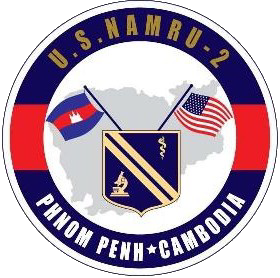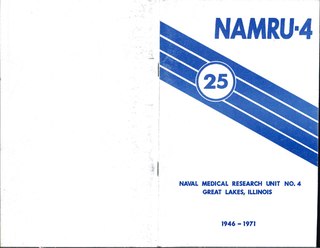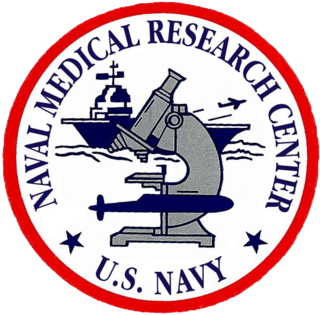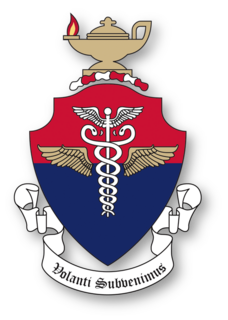
Thomas Milton Rivers was an American bacteriologist and virologist. He has been described as the "father of modern virology."
Underwater demolition refers to the deliberate destruction or neutralization of man-made or natural underwater obstacles, both for military and civilian purposes.

The Papua New Guinea Institute of Medical Research is the principal institution conducting health research in Papua New Guinea with a focus on health problems affecting the country's population.

Richard Edwin Shope was an American virologist who, together with his mentor Paul A. Lewis at the Rockefeller Institute, identified influenzavirus A in pigs in 1931. Using Shope's technique, Smith, Andrewes, and Laidlaw of England's Medical Research Council cultured it from a human in 1933. They and Shope in 1935 and 1936, respectively, identified it as the virus circulating in the 1918 pandemic. In 1933, Shope identified the Shope papillomavirus, which infects rabbits. His discovery later assisted other researchers to link the papilloma virus to warts and cervical cancer. He received the 1957 Albert Lasker Clinical Medical Research Award.
Captain Albert Richard Behnke Jr. USN (ret.) was an American physician, who was principally responsible for developing the U.S. Naval Medical Research Institute. Behnke separated the symptoms of Arterial Gas Embolism (AGE) from those of decompression sickness and suggested the use of oxygen in recompression therapy.

Naval Medical Research Unit Two (NAMRU-2) is a biomedical research laboratory of the US Navy established with the purpose to study infectious diseases of potential military significance in Asia. NAMRU-2 is officially registered as a subordinate command of Naval Medical Research Center located on Silver Spring, Maryland, U.S. and considered as the center network of laboratories around the world.

Naval Medical Research Unit Four (NAMRU-4) was a research laboratory of the US Navy which was commissioned 31 May 1946 at the Naval Hospital in Dublin, Georgia as the Mcintire Research Unit for Rheumatic Fever, which was named for the Surgeon General of the United States Navy Ross T. Mcintire. Initial staffing was 4 physicians, 4 laboratory technicians and 4 laboratory helpers under the command of LCDR John R. Seal. Eighteen months after commissioning the Navy transferred Dublin Naval Hospital to the Veterans Affairs system and the Secretary of the Navy re-established NAMRU-4 at Great Lakes Naval Base on the grounds of the Naval Hospital to study acute respiratory diseases in military personnel with a focus on their prevention. Lieutenant Commander Seal remained the Officer in Charge. The location at Great Lakes made it ideal as this was a large recruit training command with members arriving from all over the United States and being housed in military barracks and therefore would be expected to experience outbreaks of respiratory illness periodically. Diseases studied included:
Naval Medical Research Unit Five (NAMRU-5) was a research laboratory of the US Navy which was founded as a field facility of Naval Medical Research Unit 3 in Addis Ababa Ethiopia with a collecting station in Gambella on December 30, 1965 under an agreement between the US and Ethiopian governments. In 1974 NAMRU-5 was established as its own command and was housed in the Ethiopian Health and Nutrition Research Institute(former Imperial Central Laboratory Research Institute). The mission of NAMRU-5 was to conduct research and development on infectious diseases of military importance in sub-Sahara Africa. Gambella became the focus of a major malaria control effort and studies on malaria immunology. Applied research focused on the general areas of insect repellents, insecticide resistance, insect attractants and louse control. Members of the NAMRU-5 staff were also among the last Americans to ever see smallpox before its eradication. NAMRU-5 built collaborative research efforts with the U.S. Centers for Disease Control and Prevention; with local medical facilities, including the Haile Selassie University Medical School and various hospitals in Addis Ababa; and with the London School of Tropical Medicine, the University of Washington, Case Western Reserve University Department of Medicine and the University of Maryland School of Medicine. NAMRU-5 was disestablished in April 1977 following the communist takeover of the government of Ethiopia which ordered all members out of the country in 4 days. Fields of study included:

Naval Medical Research Unit Three (NAMRU-3) is a biomedical research laboratory of the US Navy located in Sigonella, Italy. Previously it was located in Cairo, Egypt. NAMRU-3 is the oldest U.S. overseas military medical research facility that has remained in the same location, and one of the largest medical research laboratories in the North Africa-Middle East region. The laboratory has been in continuous operation despite periods of political tension and a seven-year lapse in U.S.-Egyptian relations (1967–1973) since 1942.

Naval Medical Research Unit Six (NAMRU-6) is a biomedical research laboratory of the US Navy located in Lima, Peru. It is the only US military command located in South America. Its mission is to identify infectious diseases threats of military and public health importance and to develop and evaluate interventions and products to mitigate those threats.
Makerere University Walter Reed Project (MUWRP) was established in 2002 for the primary purpose of HIV vaccine development and building of vaccine testing capability in Uganda. It is one of the 5 international research sites established by the Department of Defense (DoD) United States HIV Research Program (MHRP), a program centered at the Walter Reed Army Institute of Research (WRAIR) in Silver Spring, Maryland. MUWRP's main facility is centrally located in Kampala, near the Makerere University College of Health Sciences where the MUWRP laboratory is located. The main facility includes the clinic, administrative and data offices.

The Naval Medical Research Center (NMRC) is an agency that performs basic and applied biomedical research to meet the needs of the United States Navy and United States Marine Corps. Its areas of focus include study of infectious diseases, biodefense, military medicine, battlefield medicine, and bone marrow research. NMRC is under the United States Department of the Navy's Bureau of Medicine and Surgery.

The United States Air Force School of Aerospace Medicine (USAFSAM) is the United States Air Force (USAF) organization focused on education, research, and operational consultation in aerospace and operational medicine. USAFSAM was founded in 1918 to conduct research into the medical and physiologic domains related to human flight, and as a school for medical officers trained to support military aviation operations, later coined as flight surgeons. The school supported early military aviation from World War I through the evolution of aviation and into the modern era. USAFSAM conducted medical research and provided medical support for the initial US space operations beginning in 1947 through the establishment of NASA in 1958. After the creation of NASA, USAFSAM continued to actively support civilian and military manned space missions through clinical and physiologic research. USAFSAM is one of the oldest continually operating school for flight surgeons and other operational medical personnel of its kind in the world. USAFSAM is located in Dayton, Ohio at Wright-Patterson Air Force Base, and is part of the 711th Human Performance Wing and the Air Force Research Laboratory (AFRL).

Brian R. Murphy is an American virologist and former co-chief of the Laboratory of Infectious Diseases at the National Institute of Allergy and Infectious Disease.

Naval Medical Research Unit Dayton (NAMRU-D) is a biomedical research laboratory of the United States Navy in Dayton, Ohio. It is one of seven subordinate commands of the Naval Medical Research Center and incorporates two research divisions. The Environmental Health Effects Laboratory was established in 1959 in Bethesda, Maryland, and moved to Dayton in 1976. NAMRU-D's predecessor organization, the Naval Aerospace Medical Research Laboratory (NAMRL), dates back to 1939 when it was established as an aviation medical research unit at Naval Air Station Pensacola, Florida. Pursuant to a 2005 Base Realignment and Closure Commission decision, NAMRL began incrementally relocating to Dayton in late 2010. and was formally disestablished at NAS Pensacola in September 2011. Despite being a Navy activity, NAMRU-D was set up on the grounds of Wright-Patterson Air Force Base at Dayton so it could be co-located with similar U.S. Air Force activities.
Maria DeJoseph Van Kerkhove is an American infectious disease epidemiologist. With a background in high-threat pathogens, Van Kerkhove specializes in emerging and re-emerging infectious diseases and is based in the Health Emergencies Program at the World Health Organization (WHO). She is the technical lead of COVID-19 response and the head of emerging diseases and zoonosis unit at WHO.

Arnold Monto, MD, FIDSA, FACE, DABMM is an American physician and epidemiologist. At the University of Michigan School of Public Health, Monto is the Thomas Francis Jr. Collegiate Professor of Public Health, professor of epidemiology, and professor of global public health. His research focuses on the occurrence, prevention, and treatment of infectious diseases in industrialized and developing countries' populations.

The 1957–1958 Asian flu pandemic was a global pandemic of influenza A virus subtype H2N2 that originated in Guizhou in southern China. The number of excess deaths caused by the pandemic is estimated to be 1–4 million around the world, making it one of the deadliest pandemics in history. A decade later, a reassorted viral strain H3N2 further caused the Hong Kong flu pandemic (1968–1969).
Marina Konstantinovna Voroshilova was a Soviet virologist and corresponding member of the Academy of Medical Sciences of the USSR (1969). She is best known for her work on the introduction of vaccines against poliomyelitis, the discovery of non-specific effects of oral poliovirus vaccine (OPV), and developing the concept of beneficial human viruses.
Michael Joseph Mina is an American epidemiologist, immunologist and physician. He was formerly an Assistant Professor of Epidemiology & Immunology and Infectious Diseases at Harvard T.H. Chan School of Public Health, Assistant Professor of Pathology at Brigham and Women's Hospital, Harvard Medical School, and currently Chief Medical Officer at eMed.












